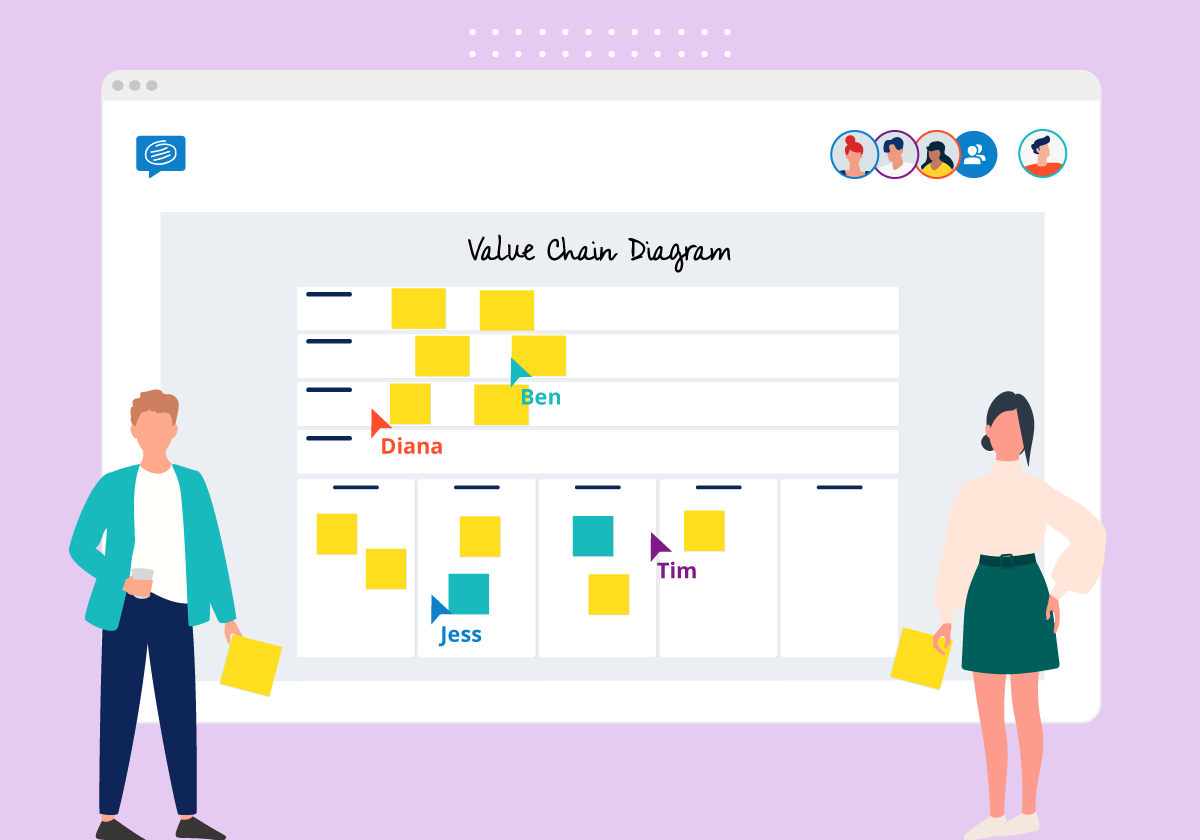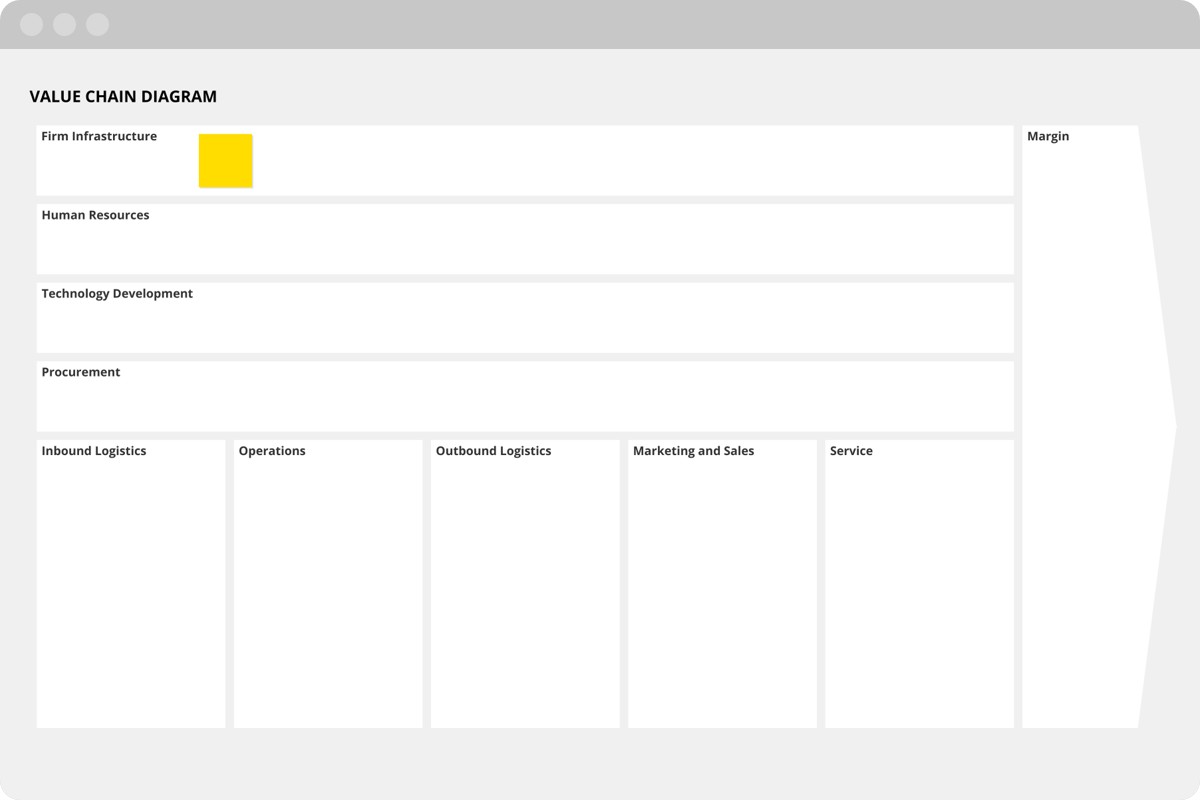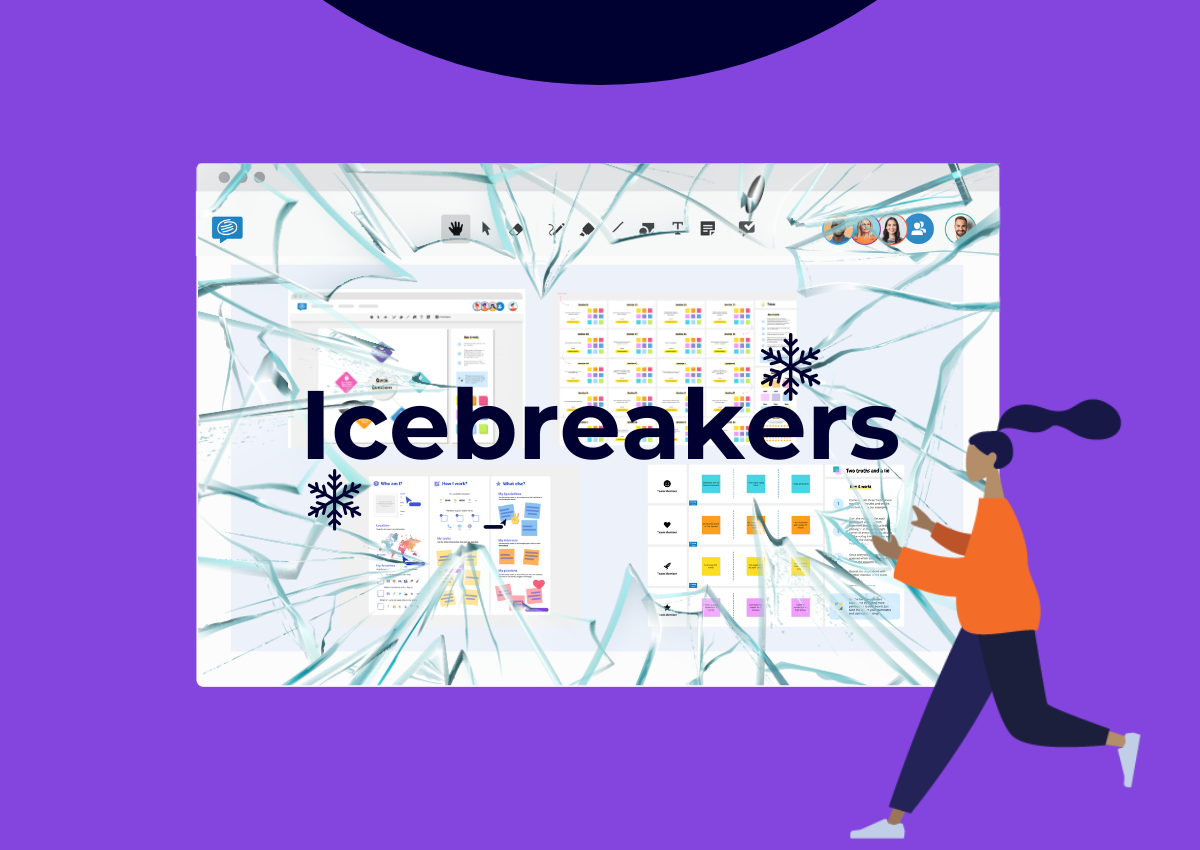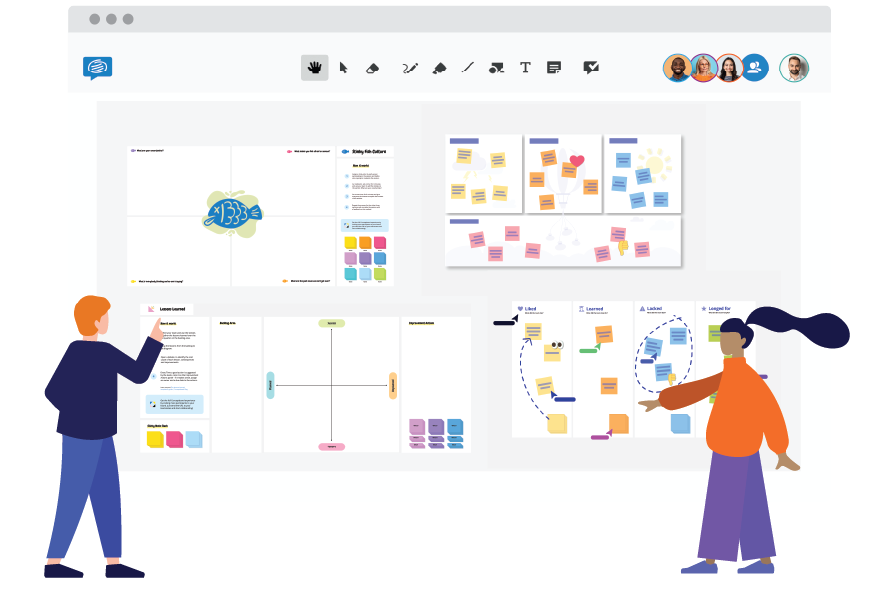What is a value chain analysis diagram?
A value chain is the set of activities needed to produce and sell products.
Using Porter’s value chain diagram template to map this journey helps to visualize every link in a chain clearly. That way, it’s easy to identify roadblocks or inefficiencies along the product journey. In turn, managers are better able to find their competitive advantage. And along the way build better products and earn bigger profits.
What is competitive advantage?
“Competitive advantage cannot be understood by looking at a firm as a whole. It stems from the many discrete activities a firm performs in designing, producing, marketing, delivering and supporting its product.” – Michael Porter
Why perform a value chain analysis?
Performing a value chain analysis helps you improve operations, reduce costs and improve processes. Ultimately, it can help you find your competitive advantage and edge out the competition.
Experts agree that it’s best to identity one competitive approach – cost or differentiation – and focus on that.
So as you are going through the process of mapping your value chain, consider which competitive advantage to pursue. That decision will help you identify areas for improvement, cost savings, or additional areas for expansion.
5 primary activities of a value chain
There are primary activities on Michael Porter’s value chain mapping template. While some may play a larger role within some businesses than others, they will all be present to some degree.
- Inbound logistics: this focuses on the raw materials purchased from suppliers.
Activities include: material handling, warehousing, inventory control, vehicle scheduling and returns to suppliers. - Operations: this is the process of turning the raw materials into products.
Activities include machinery, packaging, assembly, equipment maintenance, testing, printing and facility operations. - Outbound logistics: covers the process of getting the product to the customer.
Activities include: finished goods warehousing, material handling, pick and pack, order processing and couriers. - Marketing and sales: ensuring potential customers are aware of the product along the entire marketing funnel.
Activities include: advertising, promotion, quoting, online content and pricing - Service: once the sale is completed, after-sale services ensure that the customer is satisfied.
Activities include: installation, repair, returns, training, spare parts and updates.
Each of these activities should be aiming to add value that exceeds the cost of conducting that activity, therefore generating a higher profit.
How to use a value chain mapping template
Completing a value chain mapping template is not a simple one-person job. Encourage cross-collaboration by inviting various departments to join and outline their logistics, operational costs and activities. Best of all, everyone can collaborate in real-time on Conceptboard.
Then follow these three steps to complete your value chain analysis template:
Step 1: Add your business-specific activities along the product chain in each of these sections:
Primary activities
- Firm infrastructure
- Human resources
- Technology development
- Procurement
Support activities
- Inbound logistics
- Operations
- Outbound logistics
- Marketing and sales
- Service
Step 2: As a team, add all the processes along each part of the journey onto sticky notes on the board. Then analyze the value and cost for each of them.
Step 3: Now it’s time to assess each link in the chain, to determine where the successes and inefficiencies lie. To help you determine which changes to implement first, try plotting them on an Idea Prioritization Matrix.
Example of Value chain analysis for Amazon
Below is an example of a Value chain analysis template for Amazon.
Explore more of our helpful resources for improving business goals on the blog:
- Strategic plan template
- Jobs to be done to find what your customers really want
- Porter’s 5 forces analysis for understanding barriers to entry into new markets
Give Conceptboard a try today and see how easy it is to collaborate and brainstorm with your team online.






